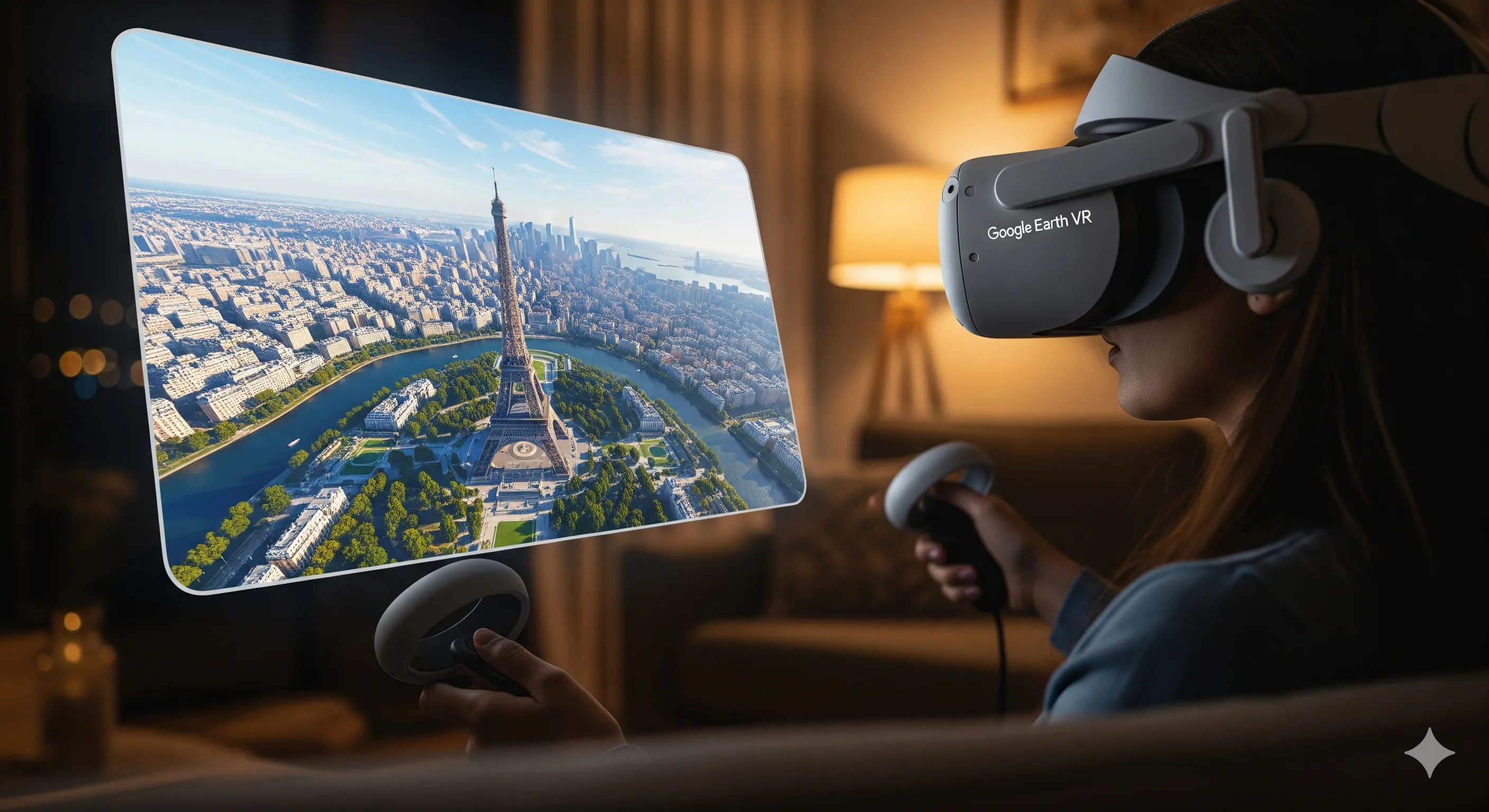Travel has always been about exploration, discovery, and new experiences. Yet, not everyone has the luxury of constant travel due to financial, health, or time constraints. Thanks to rapid advances in virtual reality (VR), the world is now closer than ever—without leaving your living room. VR travel apps and virtual tourism platforms bring the sights, sounds, and even cultures of different destinations directly to your headset or smartphone.
In this article, we’ll explore the best apps for VR travel and virtual tourism in 2025, highlighting their features, unique experiences, and why they’re changing the way we connect with the world.
1. Google Earth VR – Explore the World in Seconds
When it comes to immersive travel apps, Google Earth VR remains a pioneer. This app transforms the familiar mapping tool into a breathtaking exploration platform.
Key Features:
- Fly across the globe with smooth transitions.
- Explore cities, landmarks, and natural wonders in 3D.
- Street View integration for ground-level exploration.
- Free access across multiple VR headsets.
Why It Stands Out:
Google Earth VR combines educational value with wanderlust. Students can explore geography in 3D, while travelers can revisit favorite spots or preview future trips. The freedom to “teleport” anywhere makes it one of the most versatile VR travel tools available.

2. Wander – Your Passport to Virtual Adventures
Available on Oculus, Wander is considered one of the most realistic VR tourism apps. Using Google Street View technology, it allows users to roam nearly anywhere in the world.
Key Features:
- Street-level exploration of cities, parks, and landmarks.
- Multiplayer mode for group exploration with friends.
- Historical imagery for comparing past and present views.
- Voice search for quick navigation.
Why It Stands Out:
Unlike static travel guides, Wander provides a social element, letting you explore with others. Imagine strolling through Paris with friends across the globe—without a single flight ticket.
3. National Geographic Explore VR – Adventure with Purpose
For nature lovers and explorers, National Geographic Explore VR offers curated adventures that blend travel with environmental awareness.
Key Features:
- Guided missions in iconic locations like Antarctica and Machu Picchu.
- Interactive elements such as kayaking or climbing.
- Rich storytelling with educational context.
- High-quality visuals designed for immersion.
Why It Stands Out:
This app doesn’t just show places; it tells stories. Users not only see breathtaking destinations but also learn about conservation and history. It’s perfect for travelers who value educational tourism.
4. Alcove – VR Travel for Families
Unlike many VR apps designed for solo travelers, Alcove focuses on family-friendly virtual tourism. It’s a shared VR space where users can experience destinations together.
Key Features:
- Virtual living room where families gather in VR.
- Shared photo albums and 360° videos.
- Guided travel tours across global landmarks.
- Support for cross-generational use, making it senior-friendly.
Why It Stands Out:
Alcove turns VR travel into a bonding experience. Families separated by distance can meet virtually and “travel” together, making it an ideal solution for long-distance relationships or grandparents connecting with grandkids.

5. Ascape VR – Travel Agency in Your Headset
If you’re seeking curated VR tours, Ascape VR offers a catalog of professionally filmed 360° videos of destinations worldwide.
Key Features:
- High-resolution 360° travel videos.
- Wide variety of destinations and experiences.
- Accessible without expensive headsets—works on mobile VR.
- Offline downloads for travel without Wi-Fi.
Why It Stands Out:
Ascape VR feels like flipping through a digital travel brochure, but instead of static images, you’re immersed in cinematic experiences. It’s especially helpful for trip planning and inspiration.
6. YouVisit (by EON Reality) – Beyond Destinations
YouVisit goes beyond sightseeing by creating interactive VR experiences for tourism, education, and even marketing.
Key Features:
- 360° virtual tours of cities, universities, and attractions.
- Interactive hotspots within each VR experience.
- Business integration for hotels and resorts.
- Available on web, mobile, and VR headsets.
Why It Stands Out:
Unlike apps solely for wanderlust, YouVisit blends virtual tourism with practical use. Universities use it for campus tours, while resorts showcase rooms and amenities. For travelers, it’s a sneak peek before booking.
7. Brink Traveler – The Photographer’s Dream
One of the newest entrants, Brink Traveler focuses on natural landscapes, offering highly detailed, photogrammetry-based VR experiences.
Key Features:
- Stunning visuals of natural wonders like Yosemite and Arches.
- Guided narration by expert travelers.
- Immersive soundscapes for realism.
- Available on Oculus Quest and other headsets.
Why It Stands Out:
While many apps focus on cities, Brink Traveler specializes in outdoor destinations, making it ideal for hikers, photographers, and adventurers who crave nature escapes.

Tips for Choosing the Right VR Travel App
With so many options, how do you pick the right one? Here are some tips:
- For Exploration: Google Earth VR or Wander.
- For Education: National Geographic Explore VR.
- For Family Use: Alcove.
- For Inspiration: Ascape VR or YouVisit.
- For Nature Lovers: Brink Traveler.
Consider your goals—whether it’s casual sightseeing, serious trip planning, or family bonding—and choose accordingly.
The Benefits of VR Travel & Virtual Tourism
Beyond convenience, VR tourism apps offer several key benefits:
- Accessibility: Travel without financial, health, or time constraints.
- Education: Learn about history, geography, and culture firsthand.
- Sustainability: Reduce carbon footprints by exploring virtually.
- Connection: Share experiences with friends and family across distances.
- Inspiration: Preview trips before booking to make smarter decisions.
The Future of VR Travel
As VR technology evolves, we can expect even more immersive experiences:
- Haptic feedback to simulate touch.
- Smell simulation for scents of beaches, forests, or food.
- AI-driven guides for personalized tours.
- Integration with AR to combine physical and digital exploration.
The line between real and virtual travel will continue to blur, making VR not just a supplement but a revolution in tourism.
Conclusion
Traveling the world is no longer limited by budget or logistics. With VR travel apps and virtual tourism platforms, you can stand on the cliffs of Machu Picchu, stroll through Paris, or hike Yosemite—all from your home.
Whether you choose the global reach of Google Earth VR, the realism of Wander, the storytelling of National Geographic, or the family-friendly Alcove, these apps unlock a new dimension of exploration.
In 2025 and beyond, VR travel won’t replace real-world adventures, but it will enrich them—offering accessibility, sustainability, and inspiration. With just a headset and the right app, the world truly is at your fingertips.

















